7 Best Big Dogs That Don’t Shed [Photo Gallery]
Love big dogs but hate dealing with dog hair all over the house? You’re in luck. There are big dogs that don’t shed (or more accurately, don’t shed much), and you’ll learn all about them here.
Ready to meet some colossal canines without the hairy aftermath? Say goodbye to relentless fur battles! While no dog is truly shed-free, some large breeds leave barely a trace. Dive in, and discover these gentle giants that won’t turn your home into a fur haven.
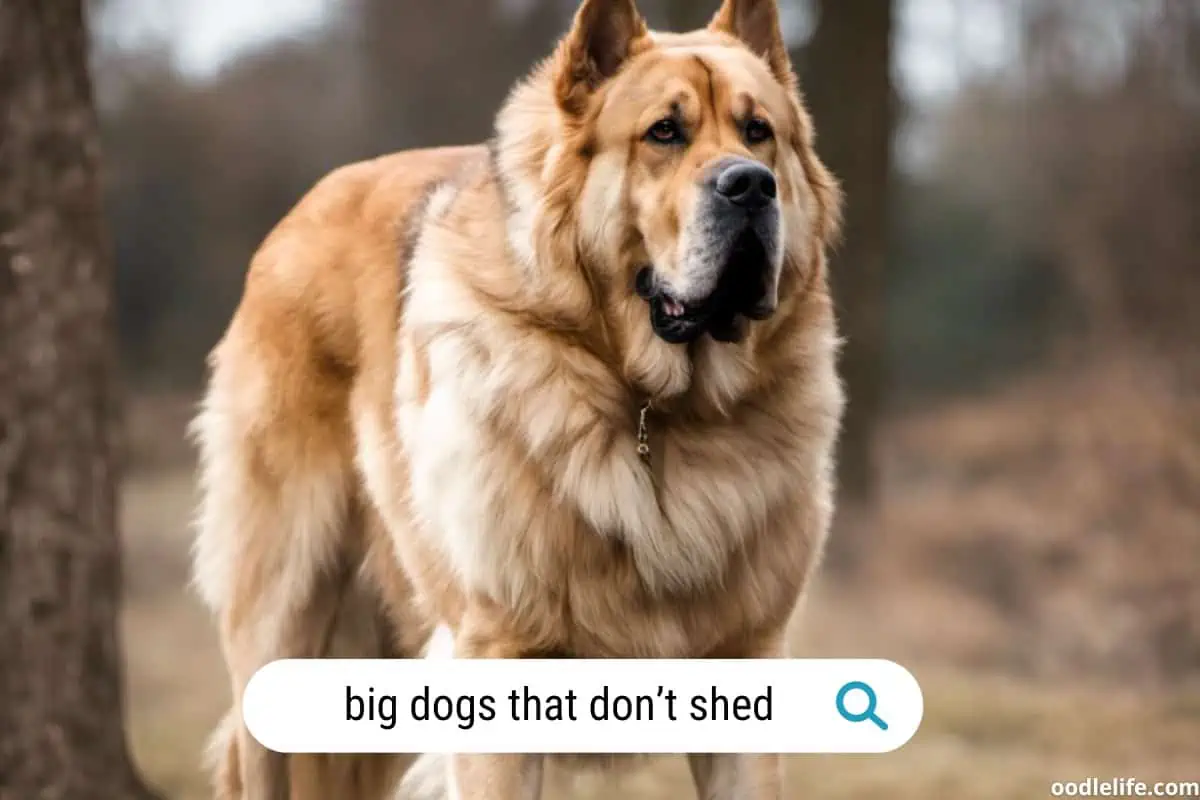
After all, who says you can’t have the best of both worlds – big cuddles without the big cleanup?
[Remember that non-shedding is different from hypoallergenic. Learn what makes a dog hypoallergenic in our extensive guide]
Standard Poodle
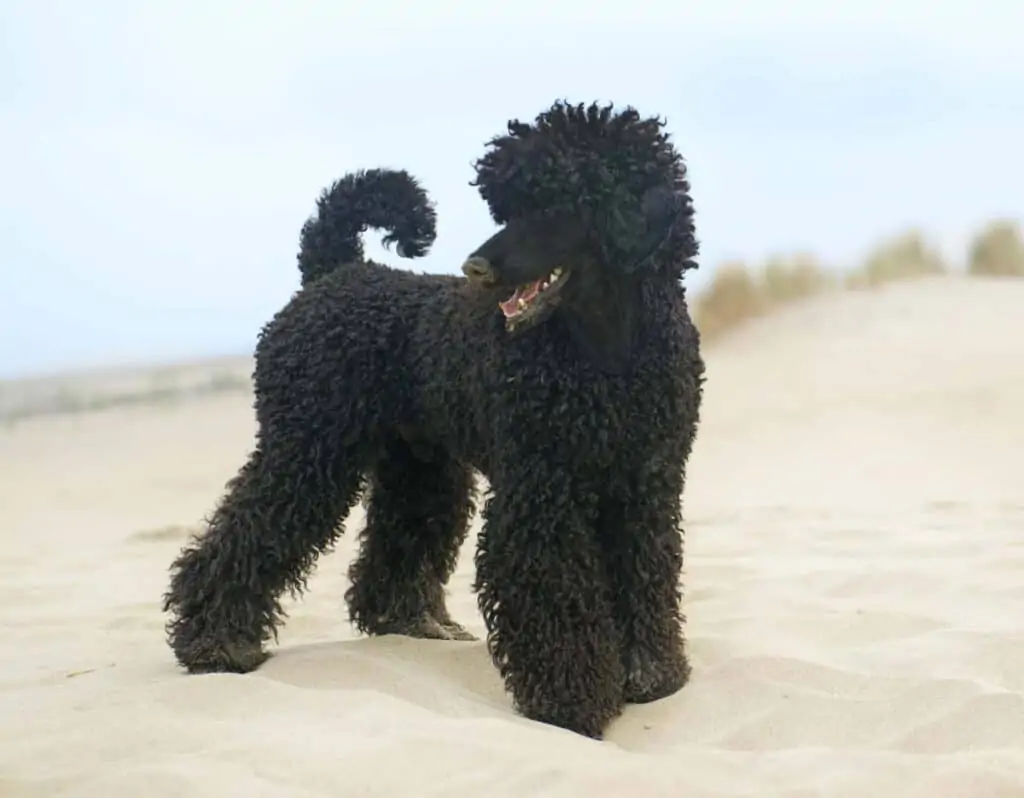
As a single-coated breed, Standard Poodles are famous for their limited shedding. As this breed (and many others on this list) lacks a double coat, it won’t shed anywhere near as much as double-coated dogs.
As long as you brush your Poodle a few times a week, you probably won’t see any stray dog hairs on any of your furniture or carpets. Try a slicker brush for the best results. You don’t need to wash your Poodle very often. Just give them a bath every one or two months. How frequently you get your Poodle trimmed depends on your preferences.
Pros
- Low shedding
- High intelligence
- Affectionate
- Friendly
- Alert and energetic
Cons
- Hair needs trimming
- High exercise needs
- Tendency to separation anxiety
Famous for their good nature, don’t walk past the Poodle.
Irish Water Spaniel
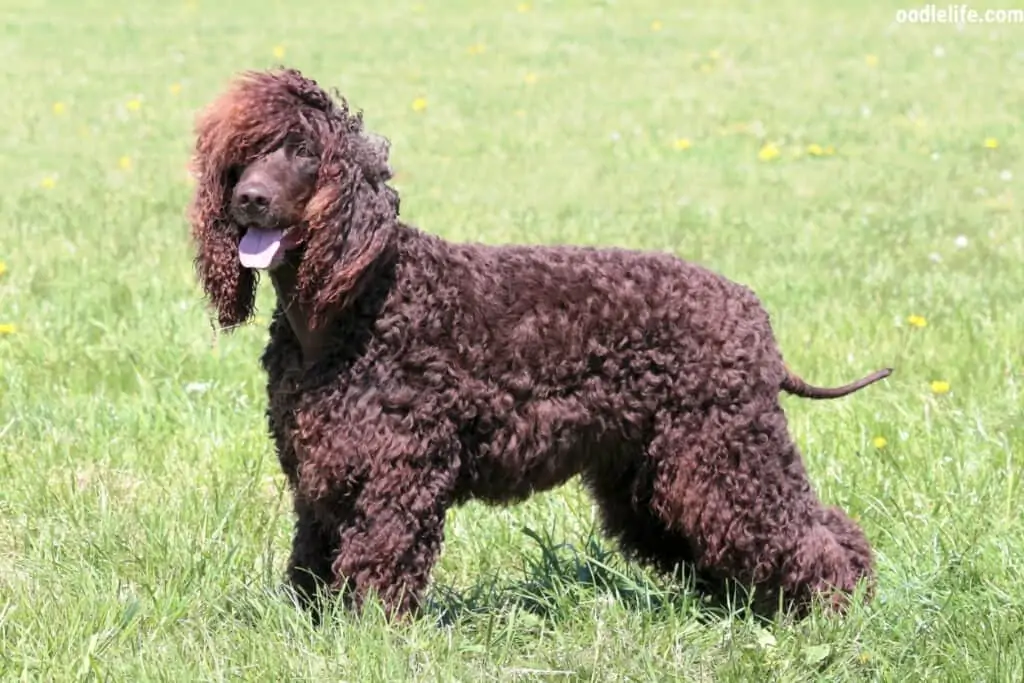
Like Poodles, Irish Water Spaniels have curly coats and have very little shedding. This breed is the tallest of all spaniels recognized by the American Kennel Club. If you have allergies, the Irish Water Spaniel is a good choice. If you brush your Irish Water Spaniel weekly, you shouldn’t notice any shedding.
You should regularly groom your Irish Water Spaniel to optimize its low shedding characteristic. The Irish Water Spaniel is quite good as a family dog, but you should monitor it around very young kids like any breed.
Pros
- Playful personality
- Affectionate personality
- Easy to train
- Low shedding
- Low barking
Cons
- Tendency to be anxious
- May not get along with other pets
- Difficult to train
Goldendoodle
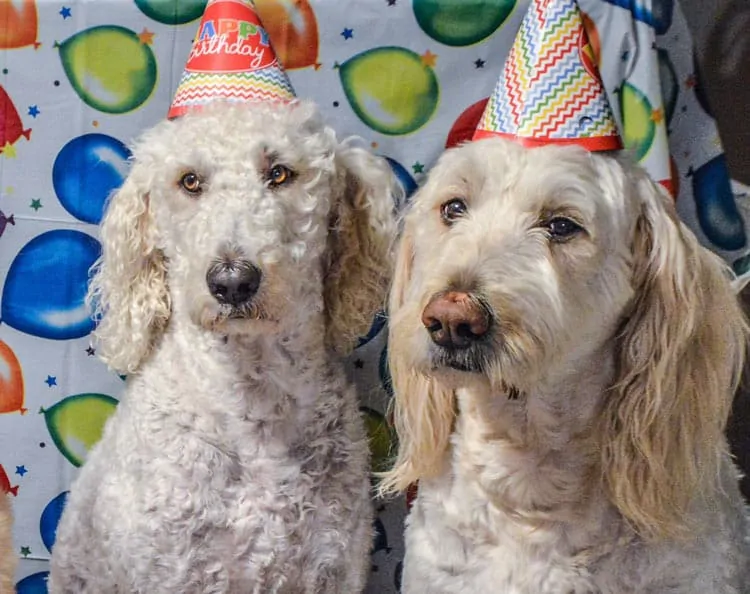
A mix of the Standard Poodle and Golden Retriever, the Goldendoodle is known as a “designer breed.” As a mixed breed, each individual Goldendoodle may be a little different. In other words, one may take more after the Golden Retriever, while another will be more like a Poodle.
Overall, though, Goldendoodles are low shedders. There will be some variation in how much your Goldendoodle sheds throughout the year. You should see most of the shedding getting ready for the hot weather.
Pros
- Affectionate and friendly
- Low to moderate shedding
- Adorable appearance
- Playful and energetic
- Loyal
Cons
- High grooming needs
- Can be mischievous
- Tend to have separation anxiety
Airedale Terrier
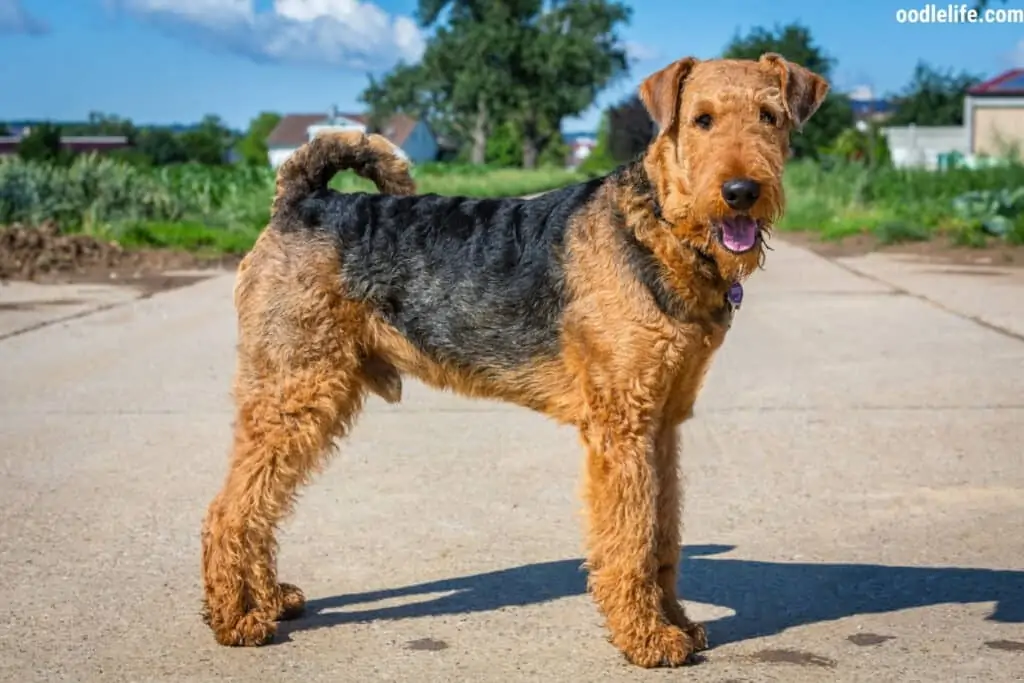
As long as you comb your Airedale regularly, you won’t have to deal with a lot of shedding. The Airedale is an excellent choice if you love terriers but prefer large dogs. This is the largest terrier breed in the world. In fact, a male Airedale may be as tall as 23 inches from shoulder to the floor.
This is a feisty dog breed, and it may give strangers visiting your house a run for their money. However, once they get to know your friends, there shouldn’t be a problem. One of the reasons the Airedale is so popular is its unique and adorable appearance. You’ll just love their personality-filled faces!
Pros
- Intelligent
- Bold and playful
- Low shedding
- Moderate grooming needs
- Loyal and protective
Cons
- High exercise needs
- Tendency to get bored
- May be destructive
Komondor
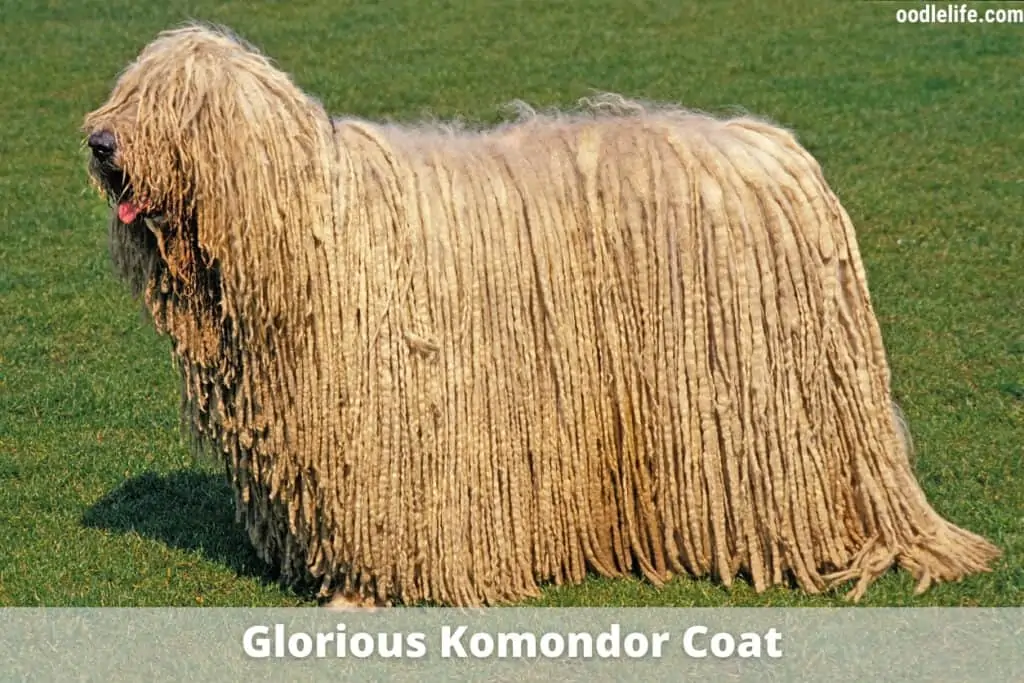
The Komondor is a large dog that is a light shedder overall, but it’s pretty high maintenance. If you want one of these dogs, be ready for quite a bit of grooming. This is especially true during undercoat shedding time, which happens twice each year.
When your Komondor sheds its undercoat, you will have to spend a lot of time separating its cords of hair. If you don’t, your dog will end up with a matted coat. And if you are like most Komondor owners, you will want to trim the cords higher than floor-length.
Also, you should shear a Komondor a couple of times a year. Be prepared for the labor-intensive shampooing of this dog. And you have got to make sure the entire coat gets completely dry, or there will be problems.
Pros
- Eye-catching appearance
- Intelligent and easy to train
- Playful and fun
- Affectionate
- Loyal and protective
Cons
- Grooming their cords
- May be unfriendly to other dogs
- May be unfriendly aggressive to strangers
Hairless Peruvian Inca Orchid
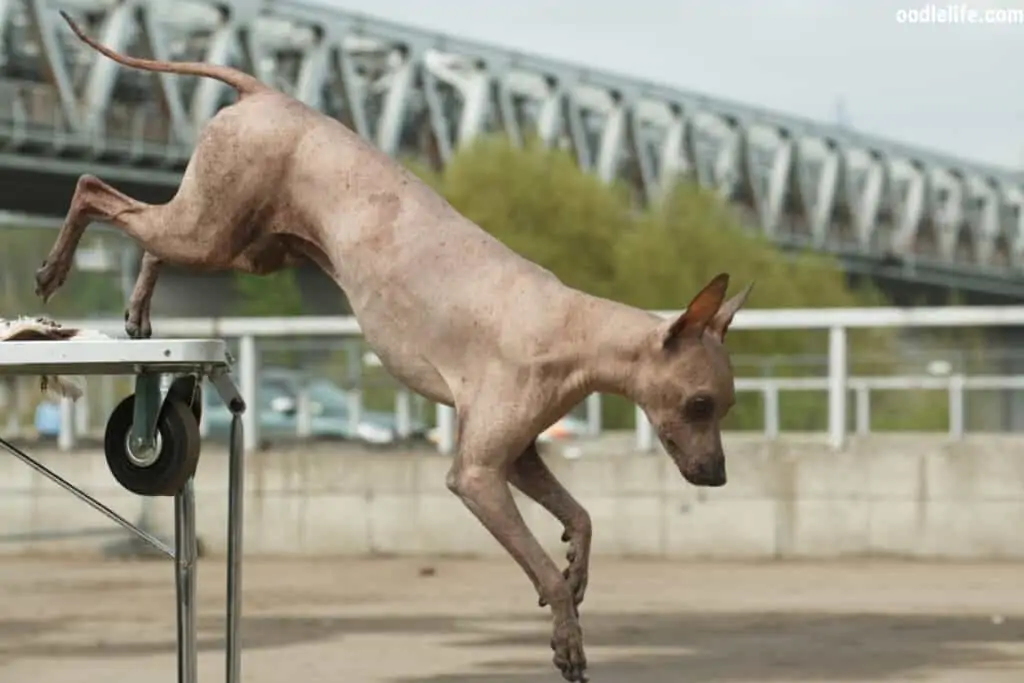
There are both coated and hairless and small and large varieties of the Peruvian Inca Orchid. Here I’m talking about the hairless, large type of this breed.
As a hairless dog, you will obviously not have to deal with shedding when a hairless Peruvian Inca Orchid is around the house. This is an agile and energetic dog, so give it plenty of exercise, or it could end up restless and unhappy.
Have you ever seen a Greyhound? The hairless Peruvian Inca Orchid is also a sighthound. That is why they have such a streamlined look. They have been bred for an elegant and athletic look and versatility and agility in physical ability.
Pros
- Zero shedding
- Quite playful
- HIgh energy
- Loyal and affectionate
- Easy grooming
Cons
- High exercise needs
- Occasional training problems
- Gets bored easily
Giant Schnauzer
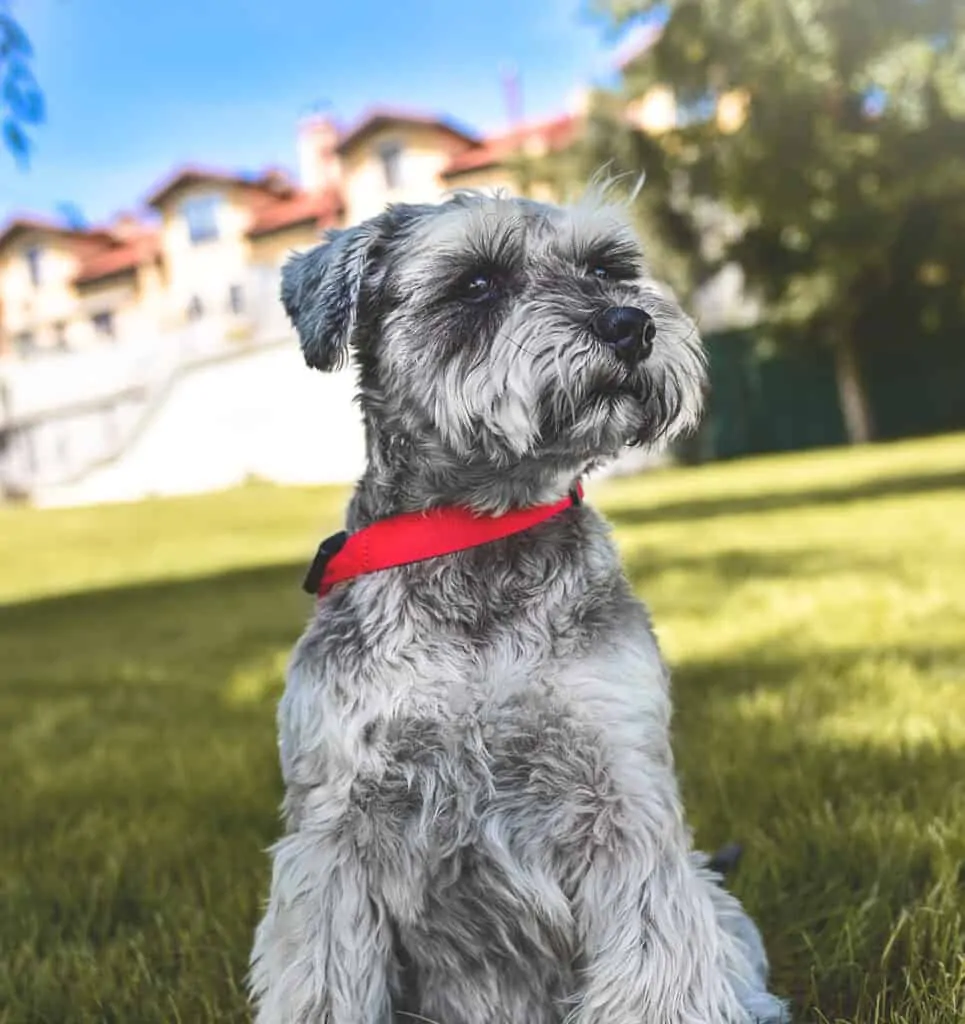
The Giant Schnauzer is another low-shedding dog we should talk about here. If you’re familiar with the standard Schnauzer, know that the Giant Schnauzer is the same kind of dog but on a much larger scale.
Be aware that while this dog has reasonably mild shedding, it is a little bit more than some of the other dogs on this list. When selecting the right breed for your household and preferences, keep this in mind. This breed is considered a moderate shedder, but it should be a low shedder if you keep up with the right kind of grooming.
The Giant Schnauzer has a wiry double coat. The fact that it does have a double coat means it will probably shed a bit more overall than single-coated dogs. One caveat to keep in mind when it comes to the Giant Schnauzer is how it can be aggressive to strangers and even other animals. You probably won’t want cats around your Giant Schnauzer.
Pros
- Very playful
- Alert and protective
- Intelligent and adaptable
- Easy to train
- Athletic
Cons
- Wariness of strangers
- High exercise needs
- May be aggressive
Afghan Hound
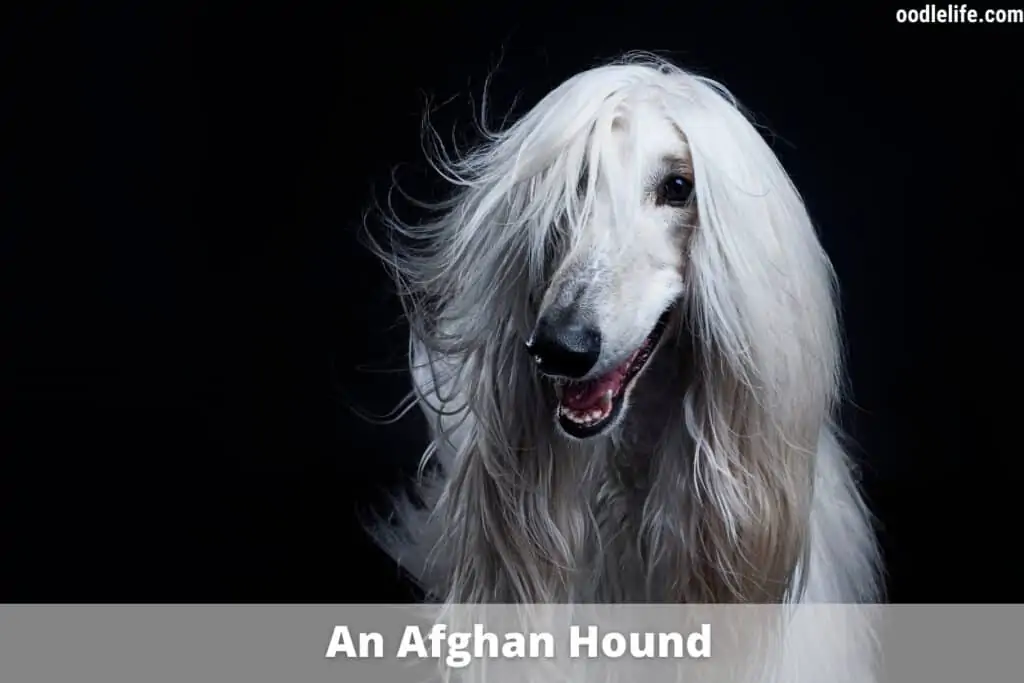
The Afghan Hound is always a show-stopper with a beautiful, silky coat. Be prepared for lots of admiration and comments when you take this breed out for a walk. While the Afghan Hound has a long coat, it doesn’t shed very much. Keep in mind this is a tall dog, and it may not suit every household.
You will have to groom the Afghan Hound quite a bit, though, to keep its coat in tip-top condition. This will also minimize any shedding that may happen otherwise. Correct Afghan Hound grooming is tricky, so make sure you get acquainted with it before getting an Afghan Hound puppy.
Pros
- Beautiful appearance
- Friendly and affectionate
- Variety of colors
- Quite playful
- Reasonably adaptable
Cons
- Frequent grooming
- Difficult to train
- High exercise needs
Table of LARGE dogs that DON’T Shed
| Dog Breed | Largeness Rating (1-10, with 10 being largest) | Shedding Level (1-5, with 1 being least) |
|---|---|---|
| Afghan Hound | 8 | 1 |
| Giant Schnauzer | 9 | 1 |
| Irish Water Spaniel | 7 | 1 |
| Komondor | 9 | 1 |
| Portuguese Water Dog | 7 | 1 |
| Bouvier des Flandres | 8 | 1-2 |
| Poodle (Standard) | 8 | 1 |
| Saluki | 7 | 1-2 |
| Peruvian Inca Orchid (large size) | 7 | 1 |
Notes:
- The Largeness Rating is subjective, based on an average of size in relation to the most commonly known large dog breeds.
- The Shedding Level is also subjective, with a rating of 1 indicating the least amount of shedding. Some dogs on this list are considered hypoallergenic or produce fewer allergens due to their type of coat.
Keep in mind that while these breeds are less likely to shed, regular grooming is still essential to keep their coat in top condition. Additionally, individual dogs, even within the same breed, may have variations in shedding.
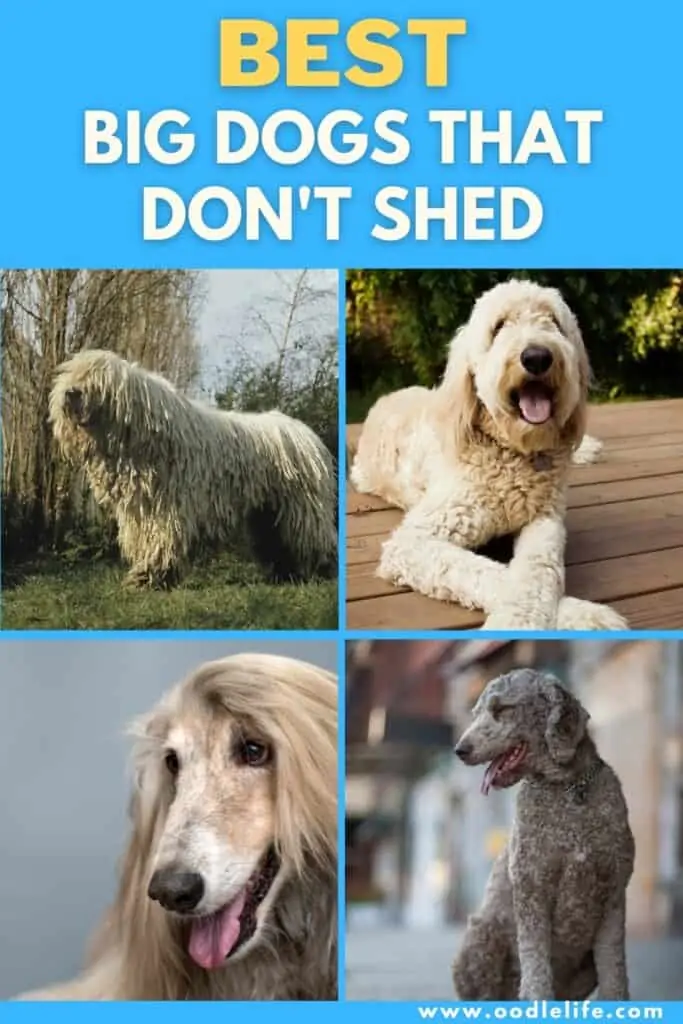
Big Dogs that DO Shed
- Saint Bernard: Originally bred for mountain rescues in the Swiss Alps, these gentle giants have a thick, dense coat that sheds heavily, especially during shedding seasons.
- English Mastiff: Known for their massive size and gentle temperament, English Mastiffs have a short but dense coat that sheds regularly, with increased shedding during the warmer months.
- Great Dane: Often referred to as the “gentle giant”, Great Danes are one of the tallest dog breeds. Their short coat sheds year-round, and it’s more noticeable because of their large size.
- Newfoundland: Originating from Canada, Newfoundlands have a thick double coat designed to protect them in cold water. They shed consistently, with a more significant shed typically twice a year.
- Tibetan Mastiff: Bred to protect livestock in the Himalayas, Tibetan Mastiffs have a dense double coat that sheds heavily, especially during their annual shedding season.
- Alaskan Malamute: Originally bred to haul sleds in the Arctic, Alaskan Malamutes have a thick double coat that sheds heavily, particularly in spring and fall.
- Leonberger: A mix of the Newfoundland, Saint Bernard, and the Great Pyrenees, the Leonberger has a water-resistant double coat that requires regular brushing due to shedding.
- Great Pyrenees: Bred to guard livestock on mountainous terrain, these dogs have a long, thick coat that sheds year-round but more profusely during shedding seasons.
- Bernese Mountain Dog: Originally from Switzerland and used for farm work, these dogs have a long, silky coat that sheds continuously, with heightened shedding in the spring and fall.
- Irish Wolfhound: Known as gentle giants, these are one of the tallest breeds. They have a rough and wiry coat that sheds moderately but can leave noticeable hairs around.
For those considering any of these breeds, it’s essential to be prepared for regular grooming and cleaning up loose fur around the home. A consistent grooming routine can help manage shedding and keep the dog’s coat healthy.
Final Thoughts
Clearly, we have plenty of options when searching for a big dog that doesn’t shed, or at least doesn’t shed very much. As long as you groom your dog the way its breed needs, you shouldn’t see much unwanted shedding with any of the breeds listed here. Use this information to go out to adopt your dream dog!